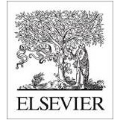Metastasis on lymph nodes (LNs), the most common way of spread for primary tumor cells, is a sign of increased mortality. However, metastatic LNs are time-consuming and challenging to detect even for professional radiologists due to their small sizes, high sparsity, and ambiguity in appearance. It is desired to leverage recent development in deep learning to automatically detect metastatic LNs. Besides a two-stage detection network, we here introduce an additional branch to leverage information about LN stations, an important reference for radiologists during metastatic LN diagnosis, as supplementary information for metastatic LN detection. The branch targets to solve a closely related task on the LN station level, i.e., classifying whether an LN station contains metastatic LN or not, so as to learn representations for LN stations. Considering that a metastatic LN station is expected to significantly affect the nearby ones, a GCN-based structure is adopted by the branch to model the relationship among different LN stations. At the classification stage of metastatic LN detection, the above learned LN station features, as well as the features reflecting the distance between the LN candidate and the LN stations, are integrated with the LN features. We validate our method on a dataset containing 114 intravenous contrast-enhanced Computed Tomography (CT) images of oral squamous cell carcinoma (OSCC) patients and show that it outperforms several state-of-the-art methods on the mFROC, maxF1, and AUC scores,respectively.
翻译:淋巴结细胞(淋巴结细胞)上最常用的传播途径,即淋巴结细胞(LNs)上的代谢,是一种死亡率上升的迹象,然而,由于专业放射学家的体积小、偏观度高、外观模糊,转移性长的LNN是耗时和难以检测的,即使对专业放射学家来说,也很难发现。希望利用最近深层学习的发展来自动检测转移性 LNs。除了两阶段检测网络外,我们这里还引入一个额外的分支来利用有关LN站的信息,这是放射师在LN诊断期间的重要参考,作为转移性LN检测的补充信息。在转移性LNSO检测的分类阶段,部门的目标是解决LNS站一级密切相关的任务,即分类一个LN站是否包含转移性LN,从而了解LN的代谢性 L.F 站的演示图案。考虑到一个转移性LNRN站预计将对附近地区产生重大影响,因此,该分部采用了一种基于GCN的架构来模拟不同LN站之间的关系。在转移性LN的测测点的分类阶段,上面学习了LNSeral-CSeral的LS-S-Seral的图像,在LSerma 和L.




